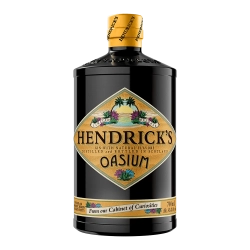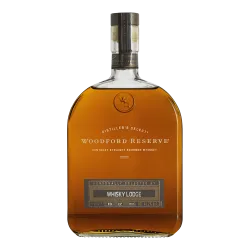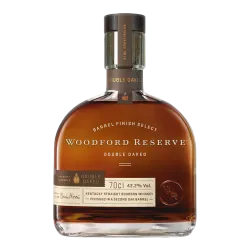At the beginning of the 20th century, Masataka Taketsuru came to study the art of distillation in Scotland. He imported the technique of whisky production to Japan, and founded the Yamazaki distillery in 1923.
There are 58 products.
Japanese Whisky: Elegance and Mastery of Japanese Craftsmanship
Japanese whisky embodies elegance and balance, resulting from a subtle blend of Scottish tradition and Japanese innovation. Each distillery pays meticulous attention to the purity of water, the selection of raw materials, and the art of blending, revealing whiskies of great finesse, often smooth, floral, and delicately fruity. Aging in Japanese mizunara oak casks imparts unique aromas and rare depth. More than just a drink, Japanese whisky is a sensory experience, reflecting the refinement and harmony characteristic of Japanese culture.
The Rise of Japanese Whisky: A Global Benchmark
Japanese whisky has risen to the top of the spirits world thanks to its exceptional refinement and perfect balance. Inspired by traditional Scottish methods, it has developed its own identity, marked by extreme precision in the choice of ingredients, distillation techniques, and aging processes. Every detail is carefully controlled to offer aromatic profiles of great subtlety, combining smoothness, complexity, and harmony, characteristics also found in other great whiskies such as French whisky or bourbon.
This unique expertise is based notably on the use of pure waters from natural Japanese sources, the meticulous selection of aging casks (American oak, European oak, but also mizunara, a rare Japanese oak), and a climate with marked variations, promoting intense and nuanced maturation. The result: whiskies that come in a wide range of flavors, from floral and fruity notes to more woody, spicy, or even smoky aromas for certain cuvées, a diversity also found in Scottish whiskies and bourbon whisky.
Long overshadowed by the great Scottish and American traditions, Japanese whisky has conquered the world in a few decades, winning prestigious awards and seducing both amateurs and connoisseurs. A true symbol of perfection and innovation, Japanese whisky has now established itself as an essential reference for all spirits enthusiasts, now rivaling the best productions of Scottish scotches and bourbon.
The History of Japanese Whisky: A Reimagined Scottish Heritage
The history of Japanese whisky began in the 20th century with Masataka Taketsuru, trained in Scotland before co-founding Yamazaki with Suntory, then creating his own distillery, Yoichi, in 1934. Inspired by Scottish know-how, these houses have forged a unique identity, blending tradition and innovation.
Today, Japanese whisky is recognized worldwide for its finesse and balance, and it continues to innovate while remaining faithful to its heritage.
The Characteristics of Japanese Whisky
Japan has established itself as a global reference in premium whisky, thanks to distilleries like Yamazaki, Hakushu, or Yoichi. A great diversity of styles can be found: from smooth and floral whisky ideal for tasting, to spicy whisky with woody accents, not to mention gourmet whisky, with aromas of honey and ripe fruits. This unique expertise makes Japanese whiskies prized spirits by enthusiasts around the world.
Unparalleled Balance and Precision
Japanese distilleries place paramount importance on quality and detail. Each step of production is carefully controlled, from the selection of ingredients to the final blending, to obtain a balanced whisky of great harmony.
Mastered Aging of Whisky
The Japanese climate, with its marked seasonal variations, accelerates the aging of whisky and gives it deep and complex aromas. Moreover, the use of mizunara oak casks, specific to Japan, brings unique spicy and woody notes, with hints of incense and sandalwood.
Impressive Aromatic Diversity
Thanks to experimentation and care in blending, Japanese whiskies offer a great variety of profiles. Some are light and floral, others richer and woody, and some even present a subtle smoky touch, reminiscent of peated Scottish whiskies.
Exceptionally Pure Water for Exceptional Whisky
Japanese distilleries place great importance on the quality of the water used in whisky production. Drawn from natural sources, often located in the mountains, it plays a key role in the finesse and smoothness of the whisky.
The Great Whisky Distilleries of Japan
Japan is home to iconic distilleries that have forged their own identity, between Scottish tradition and Japanese refinement. Yamazaki or Hakushu offer smooth, floral, and woody whiskies, while Yoichi offers more pronounced profiles, with spicy and slightly peated whiskies. Some cuvées stand out for their gourmet whisky side, with notes of honey or ripe fruits. A diversity of styles that reflects the elegance and complexity of Japanese whisky.
Suntory: The Pioneer of Japanese Whisky
Founded in 1923, Suntory is Japan's first major whisky house. It is behind some of the most prestigious references on the market.
-
Yamazaki is the first Japanese single malt, renowned for its complexity and fruity and woody notes.
-
Hibiki, an exceptional blend, is characterized by floral and spicy aromas and has won numerous international awards.
-
Hakushu, aged at altitude, stands out for its herbaceous and slightly smoky notes.
Nikka: The Legacy of Masataka Taketsuru
Founded in 1934, Nikka is a house that draws its inspiration from Scottish traditions while developing whiskies with a strong character.
-
Yoichi, distilled on the island of Hokkaido, presents slightly peated and smoky aromas, influenced by the coastal climate.
-
Miyagikyo, softer and fruitier, is aged in sherry casks that bring roundness and gourmet notes.
-
Taketsuru Pure Malt, a complex blend of single malts, highlights Nikka's unique expertise in blending.
What Are the Different Types of Japanese Whiskies?
Japanese whisky comes in several categories, ranging from single malt to blended whisky, including grain whiskies. Each type has its particularities, influenced by distillation methods, the type of casks used for aging, and the region of origin. Various profiles can be found: smooth whisky, gourmet, spicy, or even slightly peated, reflecting all the richness and diversity of Japanese know-how.
Japanese Single Malt
Produced exclusively from malted barley in a single distillery, this whisky is often aged in mizunara oak or sherry casks, giving it complex and refined aromas.
Examples: Yamazaki 12 years, Yoichi Single Malt
Japanese Blended Whisky
Resulting from the blending of whiskies from different distilleries, it is characterized by a subtle balance between smoothness and aromatic depth.
Example: Nikka From The Barrel
Japanese Grain Whisky
Made from corn or other cereals, it brings roundness and suppleness to Japanese blends and can also be enjoyed on its own.
Example: Nikka Coffey Grain
Pure Malt (or Blended Malt)
Composed exclusively of single malts from different distilleries, it retains the aromatic richness of a single malt while offering unique complexity.
Examples: Taketsuru Pure Malt, Ichiro’s Malt Double Distilleries
How to Taste Japanese Whisky?
Tasting Japanese whisky requires a delicate approach to reveal all the finesse of its aromas. Served neat, with a bit of water, or on the rocks, each method allows discovering different facets of its taste profile. The lightness, balance, and complexity typical of Japanese whisky deserve special attention, especially to appreciate its different nuances.
Choosing the Right Whisky Glass
The whisky glass influences the perception of aromas and flavors. The tulip glass is recommended for neat tasting, as it concentrates the aromas and highlights the complexity of the whisky. The tumbler glass is more suitable for whiskies served with ice or in cocktails.
Different Methods of Tasting Japanese Whisky
Japanese whisky can be enjoyed in several ways, depending on individual preferences. Neat, it offers an authentic experience that reveals its full aromatic complexity. Adding a few drops of water can soften the alcoholic intensity and release new aromatic layers. Served on the rocks, with a large ice cube, it gains in freshness while limiting dilution. Lastly, the Highball, a very popular method in Japan, mixes whisky, sparkling water, and ice for a light and refreshing drink.
The Influence of Temperature
Serving temperature plays a crucial role in whisky tasting. Between 18°C and 22°C, whisky expresses its full aromatic potential. Slightly chilled, between 10°C and 15°C, it becomes more vibrant, ideal for fruity and floral whiskies. Below 5°C, the aromas are muted, making this temperature more suitable for Highballs. Adjusting both temperature and tasting method allows you to explore the full diversity of Japanese whiskies.
More Than an Alternative: A Benchmark in Excellence
Today, Japanese whisky is far more than just an alternative to Scotch or American whiskies. It represents a true art of detail and a constant pursuit of excellence. With its meticulous craftsmanship, controlled aging, and remarkable aromatic variety, it has firmly established itself on the international stage as a must-know reference.
From refined single malts to balanced blends and rare limited editions sought after by collectors, it captivates with its elegance and complexity. Every distillery, whether historic like Yamazaki and Yoichi, or more recent like Chichibu, contributes to enriching a world in constant evolution.
With growing global recognition and ever-increasing demand, Japanese whisky continues to write its own story—proving that tradition and innovation can coexist to produce truly exceptional spirits.





.png)






















